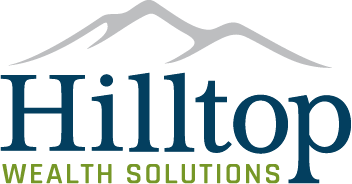
The SECURE Act and You
The legislation improves retirement security for many Americans
In late 2019, the SECURE (Setting Every Community Up for Retirement Enhancement) Act was signed into law. Required minimum distributions (RMDs) for employer-sponsored plans and IRA accounts were raised from 70 ½ years to 72 years old. It was a welcome change. The act also included smaller changes that aided workers saving for retirement.
But the SECURE Act also changed the rules which govern inherited IRAs, or so-called stretch IRAs. The change in this provision was more controversial because it required faster distributions, at least in most cases.
Although the changes are recent, Congress is already considering what many are calling SECURE Act 2.0. As the bill winds its way through Congress, there is no guarantee of passage. But it enjoys widespread bipartisan support, and both the Senate and the House have drafted similar bills.
The devil is always in the details, but we are monitoring progress and now is a good time to provide a high-level overview.
- Easing the RMD bite, again. As mentioned, an RMD from a traditional IRA isn’t required until 72. SECURE Act 2.0 would raise the RMD to 73 beginning in 2022, 74 in 2029, and 75 in 2032.
Taking your first distribution from a tax-deferred retirement account will depend on many factors, but if the funds are not needed, it is usually a good idea to defer withdrawals until required.
By delaying a withdrawal, the investments maintain their tax-exempt status. Or, if you need cash before RMDs are required, you decide how much to withdraw. You are not bound by an arbitrary rule.
- A more favorable catch-up provision. If Secure Act 2.0 is passed into law, employees 50 and older can make extra catch-up contributions to a 401(k) or similar plan. The limit for 2021 is $6,500, which is indexed to inflation.
As proposed, Secure 2.0 maintains the catch-up limits for those aged 50 but increases the annual catch-up provision to $10,000 for participants ages 62 through 64. The new limit begins in 2023. This new maximum is indexed to inflation.
However, all catch-up contributions must be placed in a Roth IRA, which would disallow a tax deduction. Starting in 2022, all catch-up contributions must be made into a Roth IRA.
Presumably, it’s a way for the government to capture revenue. Nonetheless, ROTH IRAs are not subject to RMDs, and withdrawals are exempt from federal income taxes.
- Student loan matching. SECURE Act 2.0 would permit employers to make matching contributions to their 401(k) plans tied to the employee’s student loan payments. The goal: encourage younger employees to save for retirement.
It would also help employers pass nondiscrimination tests that prevent plans from favoring higher income employers.
While we recognize this provision will probably complicate the administration of a 401(k) plan, we applaud the proposal simply because we know that the sooner one begins saving for retirement, the sooner one may enjoy the power of compounded returns. As we always counsel, it’s never too early to start saving.
The proposed changes discussed are the more important components of the proposed act, in our view. But we also wanted to briefly mention some of the additional provisions.
SECURE Act 2.0 would also:
- Allow Roth contributions to SEP and SIMPLE plans.
- Accelerate part-time workers’ participation in 401(k) plans.
- Extend to 403(b) retirement plans some of the features of 401(k) plans.
- Require the Treasury secretary to increase awareness of the Retirement Savings Contributions Credit (also known as the saver’s credit), which is available to low- and moderate-income workers.
- Eliminate some impediments to offering lifetime income annuities as a retirement plan investment option.
Please keep in mind this is a high-level look at what is proposed. We suspect changes to the proposed law will be made, but odds favor passage. And as always, we are happy to answer any questions.
Disclosure
This article was prepared by Horsesmouth, and does not necessarily represent the views of the presenting party, nor their affiliates. This information has been derived from sources believed to be accurate. Please note — investing involves risk, and past performance is no guarantee of future results. The publisher is not engaged in rendering legal, accounting, or other professional services. If assistance is needed, the reader is advised to engage the services of a competent professional. This information should not be construed as investment, tax or legal advice and may not be relied on for the purpose of avoiding any Federal tax penalty. This is neither a solicitation nor recommendation to purchase or sell any investment or insurance product or service and should not be relied upon as such. All indices are unmanaged and are not illustrative of any particular investment.
Citations
https://www.jdsupra.com/legalnews/secure-act-2-0-look-out-for-new-8698774/ “SECURE Act 2.0–Look Out for New Retirement Plan Incentives”
https://www.shrm.org/resourcesandtools/hr-topics/benefits/pages/congress-considers-a-new-round-of-retirement-legislation.aspx “Congress Considers ’‘SECURE Act 2.0’ with a New Round of Retirement Plan Fixes”
https://www.planadviser.com/secure-act-2-0-likely-become-reality/ “‘Secure Act 2.0’ Likely to Become a Reality”